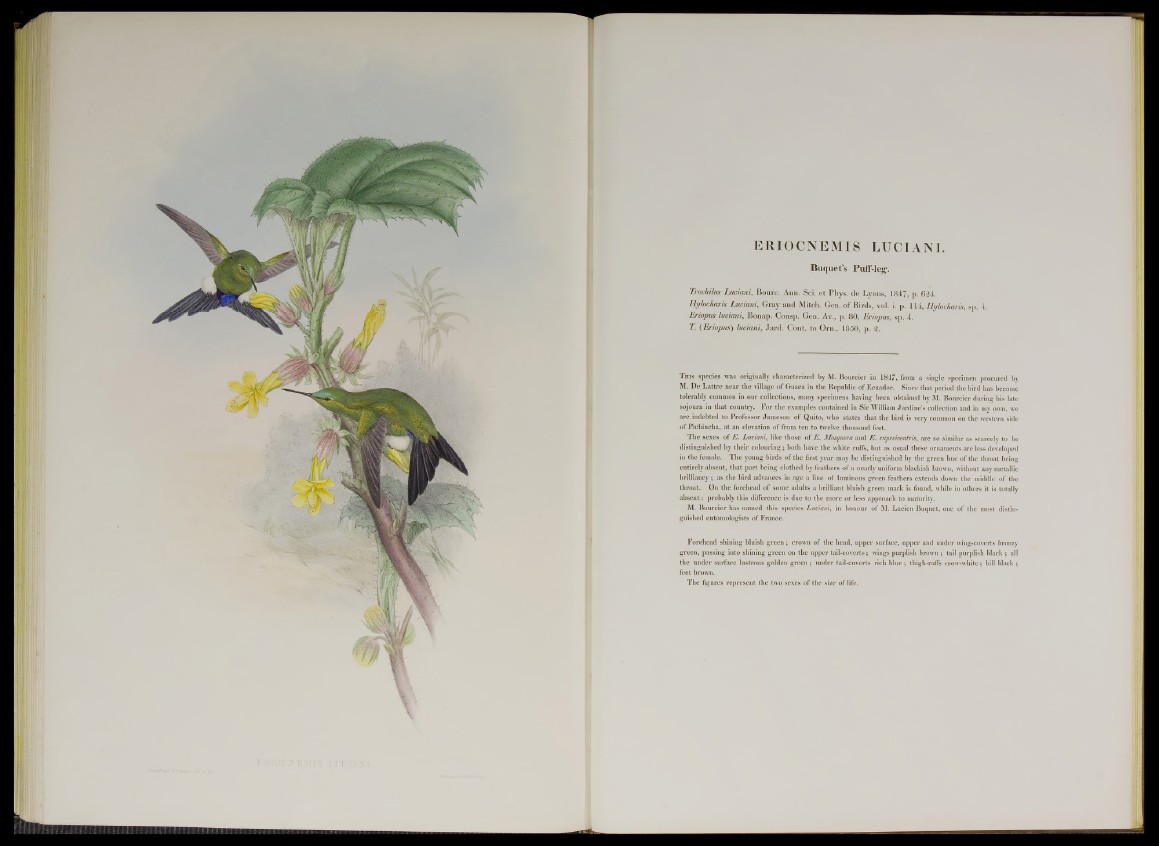
ERIOCNEMIS LUCIANI.
Buquet’s Puff-1 eg*.
Trochilus Luciani, Bourc. Ann. Sci. e t Phys. de Lyons, 1847, p. 624.
Hylocharis Luciani, Gray and Mitch. Gen. o f Birds, vol. i. p. 114, Hylocliaris, sp. 4.
Eriopus luciani, Bonap. Consp. Gen. Av., p. 80, Eriopus, sp. 4.
T. (Eriopus) luciani, J a rd . Cont. to Orn ., 1850, p. 2.
T his species was originally characterized by M. Bourcier in 1847, from a single specimen procured by
M. De Lattre near the village of Guaca in the Republic of Ecuador. Since that period the bird has become
tolerably common in our collections, many specimens having been obtained by M. Bourcier during bis late
sojourn in that country. For the examples contained in Sir William Jardine’s collection and in my own, we
are indebted to Professor Jameson of Quito, who states that the bird is very common on the western side
of Pichincha, at an elevation of from ten to twelve thousand feet.
The sexes of E . Luciani, like those of E. Mosquera and E . cupreiventris, are so similar as scarcely to be
distinguished by their colouring; both have the white ruffs, but as usual these ornaments are less developed
in the female. The youug birds of the first year may be distinguished by the green hue of the throat being
entirely absent, that part being clothed by feathers of a nearly uniform blackish brown, without any metallic
brilliancy ; as the bird advances in age a line of luminous green feathers extends down the middle of the
throat. On the forehead of some adults a brilliant bluish green mark is found, while in others it is totally
absent: probably this difference is due to the more or less approach to maturity.
M. Bourcier has named this species Luciani, in honour of M. Lucien Buquet, one of the most distinguished
entomologists of France.
Forehead shining bluish green; crown of the head, upper surface, upper and under wing-coverts bronzy
green, passing into shining green on the upper tail-coverts; wings purplish brown ; tail purplish black ; all
the under surface lustrous golden green ; under tail-coverts rich blue ; thigh-ruffs snow-white; bill black ;
feet brown.
The figures represent the two sexes of the size of life.